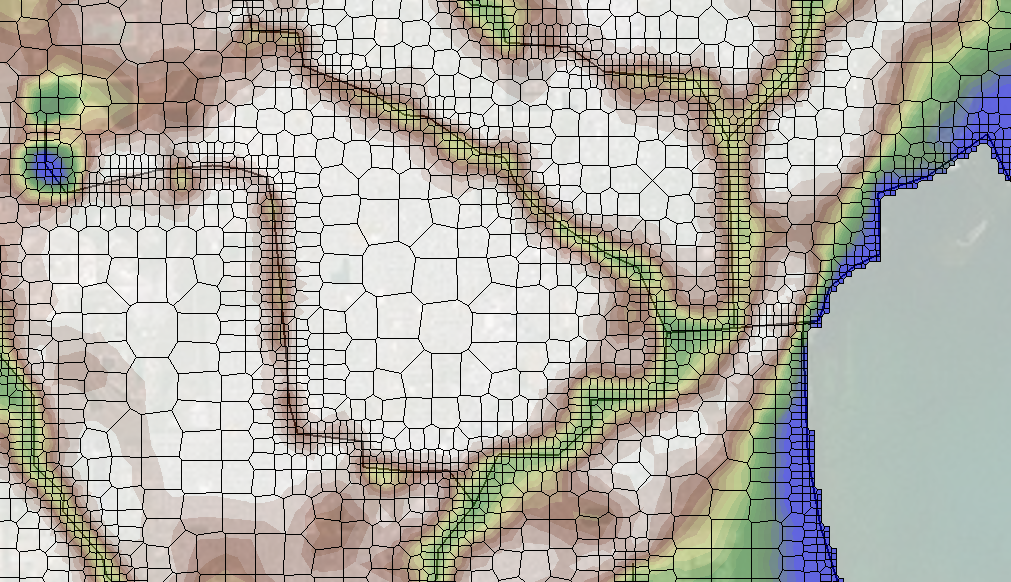We use cookies to make your experience better. To comply with the new e-Privacy directive, we need to ask for your consent to set the cookies. Learn more.
Reliable Grid Conversion with the Voronoi UGrid from UGrid Tool
Did you realize while planning your Groundwater Modeling System (GMS) project that a different unstructured grid (UGrid) would be a better fit? UGrids are very flexible and can be refined around streams, wells, basins, and other objects. But sometimes, one type of UGrid may fit better than another for a particular project. The Voronoi UGrid is one of the more flexible types of UGrids available in GMS. The Voronoi UGrid from UGrid Tool in the Toolbox is there to help convert a UGrid into a Voronoi UGrid.
For most UGrids, the attributes and boundary conditions assigned are associated with the edges, points, and nodes, all on the outer edges of the cells. For a Voronoi UGrid, those things are associated with the point at the center of the cell.

If your model is fairly straight-forward, has structured boundaries or rectangular domains, UGrids with rectangular cells might still be the better choice. Or, if you require computational efficiency, the Voronoi UGrid may not be your best choice. However, if those are not considerations, then using the Voronoi UGrid from UGrid Tool may be a good option for you.
With a Voronoi UGrid, you get even greater flexibility to refine around irregular boundaries thus improving your groundwater model’s accuracy. The cells of the Voronoi UGrid are created with an algorithm that depends solely on the geometry of the points, arcs, and polygons in the active coverage. Voronoi UGrid cells can have more sides (up to eight) than just the three or four sides allowed in most other UGrids. Therefore, it can fit into the boundaries of a model and be refined along arcs and at points much more accurately.
You will find the Voronoi UGrid from UGrid Tool in the Unstructured Grid folder of the Toolbox. The Voronoi UGrid from UGrid Tool only needs the input UGrid and a name for the new Voronoi UGrid it will generate. There are some limitations to the tool. Conversions may not occur if any created final cells would have more than 8 edges. The UGrid being converted must contain only 2D cells. And there can also be no disjoint regions where cells aren’t connected to the rest of the UGrid.
Head on over to GMS to see if the Voronoi UGrid from UGrid tTool will help your model!


